by Naomi L. | August 28, 2013 | Blog, Creative Writing, Motivational Music |
OK, so I had another idea for an Inspiration subtopic for my blog. Aside from good books and talented authors, I’ve found that another major source of inspiration for my writing is music. Based on that thought, I decided to start a Motivational Music segment on my blog, and since there’s so much great music that I enjoy, each new post will feature a few related artists/songs at a time.
To start off this segment, here are a few of my favorite artists in the ambient and post-rock genres. Enjoy, and be sure to check out their music if you can!
Brent Gnecco
 Genre(s): Ambient, Post-Rock
Genre(s): Ambient, Post-Rock
Origin: Los Angeles, CA, USA
Writing Inspiration: Fantasy, romance, tragedy
My Favorite Song(s): “We Are But Ghosts“, “Everything”
How could I start my Motivational Music posts with anyone else? This young man is someone very special to me, and his gift (and taste) in music has been inspiring me ever since we became friends. In fact, most of the artists to be featured on this blog were recommended to me by him, so if you discover new music here that you enjoy, you probably have him to thank for it.
Most of Brent’s music consists of what he calls “sad sounds”, strung together in beautiful melodies with a melancholy tone. His songs are usually played with an electric guitar and loop pedals to create echoing ambient sounds, though he’s also created some very cool rock and post-rock pieces (a few of which were written just for me!). The ethereal feel of his songs has helped me imagine some wonderful fantasy scenes for my writing, and his so-called “sad sounds” have sparked ideas for more tragic scenes in my romantic stories.
To hear Brent’s music, check out his YouTube channel and SoundCloud page. I recommend starting with “We Are But Ghosts“. Enjoy!
Explosions in the Sky

The Earth Is Not a Cold Dead Place (2003)
Genre(s): Post-Rock, Instrumental
Origin: Austin, TX, USA
Writing Inspiration: Romance, tragedy, poetry
My Favorite Song(s): “Your Hand in Mine” (The Earth Is Not A Cold Dead Place, 2003)
If I remember correctly, Explosions in the Sky is the first post-rock band I ever listened to in my life. They’re also the first band I ever saw live in concert, and what an amazing experience it was! This band is popular for creating some very beautiful and emotional music, almost all of which is instrumental (guitars and drums). Because their songs are so moving and don’t usually have lyrics, I like to listen to them when trying to find inspiration for purely emotional writing, such as poetry and certain scenes involving characters of a more artistic nature. They’re also great to listen to just for relaxing and getting lost in thought once in a while.
Hammock
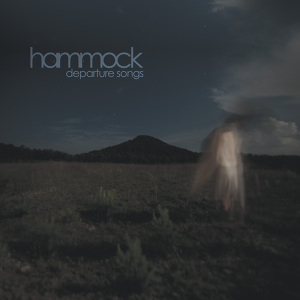
Departure Songs (2012)
Genre(s): Ambient, Post-Rock
Origin: Nashville, TN, USA
Writing Inspiration: Fantasy, romance, tragedy
My Favorite Song(s): “Ten Thousand Years Won’t Save Your Life” (Departure Songs, 2012)
Hammock is probably one of my favorite bands in the ambient/post-rock genres. Like Explosions in the Sky, their music is comprised largely of instrumental sounds, mostly guitar combined with electronic beats. I tend to find inspiration in their music for poetic and fantasy pieces, as their unique sound often has a soft echoing style to it. I especially love the album Departure Songs (2012), which focuses on themes of loss and consists of beautiful songs with an ethereal vibe, making it great inspiration for writing of a more melancholy type.
These are just a few of the ambient/post-rock artists that have inspired me with their music. There will be more featured on my blog in the future, so if you enjoy finding inspiration in this art as much as I do, look forward to more posts in my Motivational Music segment! Thanks for reading/listening!
by Naomi L. | August 21, 2013 | Blog, Creative Writing, Featured, Tropes |
*click*
Have you ever read a story or watched a movie/play where you noticed a certain item being used as an important plot device in a major scene, only to realize that the object in question had already made an appearance in a previous scene as some seemingly insignificant prop in the background?
Well, what you witnessed was the figurative (or in some cases, literal) firing of a Chekhov’s Gun.
The Loaded Rifle on the Wall
The Chekhov’s Gun is a literary technique that places significance on a certain story element that was introduced earlier on as an unimportant detail. The trope is based on a dramatic principle conceived by Russian playwright Anton Chekhov (1860-1904), which states that every detail presented in a story must either be necessary to the plot in some way or removed from the narrative altogether.
If you say in the first chapter that there is a rifle hanging on the wall, in the second or third chapter it absolutely must go off. If it’s not going to be fired, it shouldn’t be hanging there.
– Anton Chekhov (S. Shchukin, Memoirs. 1911)
It’s important to note here that a Chekhov’s Gun is not necessarily an actual gun; the playwright’s example was merely used in reference to live theater, where a loaded gun on stage would pose an unnecessary safety hazard if it wasn’t going to be used as anything more than a background prop. Rather, the device is a metaphor for any element of a story that can become important later on. It doesn’t even have to be an object; it can just as easily be a character, a skill, a line of dialogue, etc. A full list of possibilities and variants can be found at the TV Tropes Chekhov’s Gun Depot.
Handling a Chekhov’s Gun in Your Writing
There are two main concepts connected with this trope:
- Conservation of Detail – Every detail presented in a story has an important reason for being there
- Foreshadowing – A detail given early on is an indication of a plot point that will happen later in the narrative
While a Chekhov’s Gun should really be used with the former concept in mind, it’s most commonly associated with the latter. Writers will often use this trope as a tool to indicate upcoming events in the story, usually in a subtle manner that goes virtually unnoticed the first time around and becomes clear after the revelation of the foreshadowed plot point.
So how should you use this technique in your own stories? To properly execute a Chekhov’s Gun, the element in question must have some level of presence established in its introduction, not necessarily so much that it gives away a potential plot twist, but enough that the audience will realize it was there all along by the time it becomes significant. This will keep your readers from assuming you pulled some random solution out of thin air to hastily tie the plot together at the end, and thus prevent you from evoking their disappointment.
Also, bear in mind that there is such a thing as too many Chekhov’s Guns in one story. While you shouldn’t feel limited to just one per narrative (and many writers aren’t, myself included), you should still take care not to go overboard with the trope. Of course, these limits may vary depending on the type of work in which it’s used; for example, fantasy sagas or mystery thrillers may depend heavily on these devices to help drive the plot (as seen in the Harry Potter series, which even has its own Chekhov’s Gun page on TV Tropes), whereas simpler action stories could work just fine with only a couple at most. So if you’re planning to write long narratives full of twists, you might be able to make good use of this technique throughout the entire story arc. It’s worth noting, though, that if the plot becomes convoluted enough, your readers might eventually start looking for significance in the tiniest details to try to find Chekhov’s Guns that you may or may not have placed in your story. But then again, maybe that’s exactly what you want.
The Chekhov’s Gun can be a useful device in fiction, provided it’s used correctly and in proper tone with the story. Whether you choose to use this technique for major plot points or just to add some interesting twists, be sure to always keep in mind the importance of only including details with a given purpose, and you’ll be able to build a narrative that highlights the plot and tells a story that can be freely complex on the surface while remaining simple and straightforward at its core. And that, in my opinion, is the best type of story a writer can create. Happy writing!
*BANG!*
by Naomi L. | August 14, 2013 | Blog, Creative Writing |
Today’s blog post is part of a Secret Subject Swap hosted by blogger Emily Morgan. This topic was sent to me by Jodi Gibson, who asked me to write about “ideas”. Based on that suggestion, I wrote a brief post about my creative writing ideas: where they come from, when they strike me, etc. Thanks for the topic, Jodi!
Where and when do my ideas strike me?
I can’t really pinpoint one main source for my writing ideas, as they seem to come from anywhere and everywhere. I can, however, list some of my favorites.
Sources of My Best Ideas
- Books
- Video Games
- Nature
- Art
- People
Many of my stories have blossomed from ideas that were taken from various books I’ve read and woven together in my mind. Most of my early writing, however, was based on the video games I played all the time, many of which became source material for fanfiction. Now as a biologist, I get plenty of good ideas from observing nature and the behavior of animals, and I’ve also found great inspiration in works of art like music, paintings and photography. But quite a few of my favorite pieces actually grew from ideas that struck me while observing the people close to me, especially my family.
So when exactly do these ideas come to me? Usually when I least expect them. As you can probably tell by the above list, they tend to strike me pretty much anywhere, at any time. But the best ones come while I’m enjoying the things I love most.
How do I get my ideas?
There’s no special routine I follow to inspire new ideas. In fact, sometimes I find that the harder I try to get a good idea, the less likely it is for one to come to me. So instead, I keep on doing whatever I enjoy, and allow the ideas to flow naturally during my “idle thinking”.
That being said, what seems to work especially well to stimulate new ideas for me is researching subjects I find interesting. For example, one of my ideas for a fantasy novel came to me while looking up mythological creatures, as I’ve always been fascinated by ancient and medieval mythology from around the world. Other ideas for science fiction have sparked from the Zoology and Genetics textbooks I used to study when I was in college working toward a Bachelor’s degree in Biology. Even now, I find myself thinking about fictional stories I could write based on the scientific papers I’m working on for Ecology and Evolutionary Biology journals. In short, I don’t really find ideas; they find me.
What do I do with my ideas after I get them?
This is the really exciting part: finding out where a new idea leads. Whenever I get an interesting idea for a story or poem, I make a note of it somewhere on my computer or in one of my notebooks for future reference. Most of them don’t actually go anywhere at first, but I hold on to them anyway in the hope that they’ll prove useful later on (some of them still haven’t). Others start growing into new pieces right away, and in the case of flash fiction and short poems, they can turn into full pieces almost immediately (e.g. “One Mistake“, which was literally finished less than ten minutes after the idea came to me)!
But some of my favorite and most exciting ideas are the ones I get for novels. These I treat with the utmost care, keeping them safe in the back of my mind (as well as a written note, so they won’t be forgotten) and leaving them free to grow in my imagination while I carry on with the rest of my writing and other activities. These ideas are particularly special because they’re the ones that keep coming back, constantly reminding me that I have greater stories to tell, pushing me to release them from the confines of my mind and nurture them with words so they can someday roam free in the outside world as full-grown stories. It may be years before they actually become novels, but I’m sure that when they finally do, they’ll be the ones that were most worth the wait, having blossomed from the most valuable seeds of my imagination.
This has been a special topic post in Emily Morgan’s Secret Subject Swap. To learn more, just follow the button below to her site, and be sure to check out the other blogs participating in the event. Thanks for reading!

Other bloggers in the Secret Subject Swap
Melissa Khalinsky: Melissa Writes
Jodi Gibson: JFGibson
Becky Fyfe: Imagine! Create! Write!
Josefa: Always Josefa
Rhianna: A Parenting Life
Ashley Howland: Ghostnapped
Zanni: My Little Sunshine House
by Naomi L. | August 7, 2013 | Blog, Creative Writing, Off The Bookshelf |
OK, it’s time to share another inspiring selection from my bookshelf. Because last week’s Notable Authors post was dedicated to J.K. Rowling, today’s Off The Bookshelf topic is a complementary review of her most famous works. Since I couldn’t say that only one of these books has inspired me, instead I’d like to briefly cover some general points of all seven of the author’s world-famous fantasy novels: the Harry Potter series.
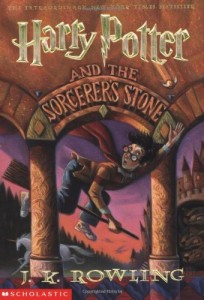

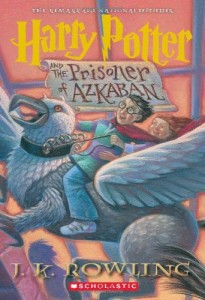
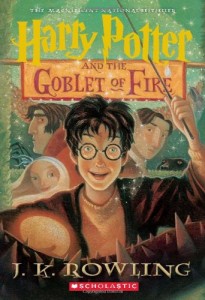
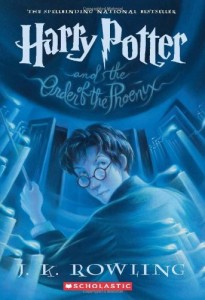
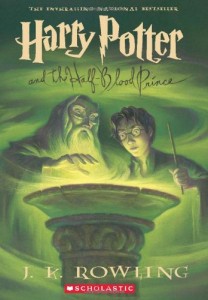
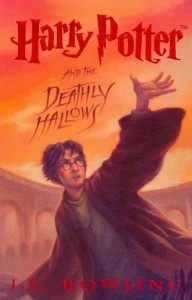
Summary
First published in the United Kingdom by Bloomsbury (June 1997) and in the United States by Scholastic (September 1998), the Harry Potter series consists of seven novels primarily in the fantasy genre, written for a target audience of young readers from children to young adults. The books tell the coming-of-age story of Harry Potter, a wizard boy who gained fame in the underground wizarding world as a baby after mysteriously surviving an encounter with the Dark sorcerer who terrorized the magical community and killed his parents. The series focuses mainly on Harry’s adventures with his friends Ron Weasley and Hermione Granger at Hogwarts School of Witchcraft and Wizardry between the ages of 11 and 17, with each book taking place over one year of the characters’ lives, all strung together through a story arc about the young protagonist’s quest to unravel the mysteries of his life and ultimately destroy the power-hungry Lord Voldemort to save the magical and nonmagical worlds from his evil reign once and for all.
Review
The Harry Potter books have gained incredible success since the first publication of Harry Potter and the Sorcerer’s Stone (if you’ll forgive my use of the American title, since it’s the one with which I’m most familiar), and with such high popularity and critical acclaim, it’s easy to see why. Rowling’s intricate world, compelling characters and engaging storyline quickly drew in millions of readers worldwide, and boosted the novels to become the best-selling book series in history by mid-2011.
Although it’s mostly considered fantasy for its predominant theme of magic, Harry Potter also falls under such genres as mystery, thriller and coming of age. This makes it a very versatile and unique read, which may partly explain its enormous success. Despite appearing as a children’s story about wizards on the surface, the series has many levels to it that make it appealing to a broader range of readers. For instance, those who don’t care so much for fantasy might still enjoy Harry Potter as an adventure story at its core, or for its mystery elements, or even as a tale about a young boy trying to find out who he really is. Aside from its overlapping genres, the author also made a point of allowing various themes to blossom throughout her work, including the trials of adolescence, political subtexts, and especially death.
One of the most notable achievements of this series was the fact that it encouraged so many children to read. Yet there was more to it than just getting kids to pick up books they would normally consider above their reading level. As one of the children of the Potter generation, I can attest to the special experience of growing up with the main characters. I read the first book when I was very close to 11 years old and finished the last one not long after turning 17, and because of the way the series gradually progressed into darker themes with each new book, Harry Potter was the key work of literature in my transition from lighter children’s stories to more mature fiction, helping me to develop both as a reader and as a writer.
There’s no question that these books will forever be revered throughout the history of literature, not only for their record-breaking commercial success, but for their tremendous cultural impact. The series has inspired an entire generation of young readers, and it will always hold a special place in the hearts of the millions who have been touched by the magic of Harry Potter.
Inspiration
If Roald Dahl first hooked me on fantasy stories with Charlie and the Chocolate Factory, J.K. Rowling kept me forever loyal to the genre with Harry Potter. As I like to put it, “I came for the chocolate factory, and stayed for the wizarding school.”
Harry Potter has been a huge inspiration to me since my childhood, as much in fantasy specifically as in the rest of my writing in general. The books have opened my eyes to a wonderful world of fiction, and they’ve taught me a great deal about the techniques and passion it takes to create a magical universe. I’ve been an aspiring fantasy author since I fell in love with creative writing as a child, and I can honestly say that this series has played a major part in keeping my dream alive for so many years. No matter how many other novels I go on to read and even write throughout my life, the Harry Potter books are and always will be among my absolute favorites.
by Naomi L. | July 31, 2013 | Blog, Creative Writing, Notable Authors |
Last month, I started a topic on my blog about sources of inspiration for my writing, which I opened with a couple of posts about Roald Dahl and one of his wonderful novels. Now I’d like to continue on the topic by passing the spotlight onto another author who has greatly inspired me in my writing, and since today is her birthday, I decided this would be the best time to include her in the segment. Featured today among my blog’s Notable Authors is world-famous fantasy author: J.K. Rowling.
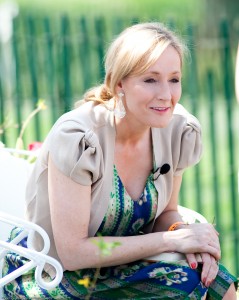
J.K. Rowling in 2010
Bio
Name: Joanne Rowling
Pen Name: J.K. Rowling
Life: Jul. 31, 1965 – present
Gender: female
Nationality: British
Occupation: novelist
Genres: fantasy, tragicomedy, crime fiction
Notable Works: Harry Potter series, The Casual Vacancy, The Cuckoo’s Calling (under the pseudonym Robert Galbraith)
My Favorite Works: All the Harry Potter books, but especially Harry Potter and the Deathly Hallows (Book 7)
Inspiration
J.K. Rowling is a world-renowned British novelist, best known for her highly acclaimed Harry Potter series. I was first introduced to her work in my childhood, when my best friend at the time gave me the first two books in the series as a birthday present, and it took me less than a chapter to be hooked for life. The author created such a vivid and imaginative world in Harry Potter and the Sorcerer’s Stone (or Philosopher’s Stone in its original UK title) that I remained loyal to the series for the rest of my childhood and my entire adolescence, reading every new book as it came out until finally closing the back cover on the epilogue. Like so many young readers of my generation, I had been captivated by the magic of Rowling’s imagination.

Harry Potter, Books 1-7
Though she’s established herself as a versatile writer, it’s likely Ms. Rowling will always be known first and foremost as a fantasy author, and it’s as such that she’s inspired me in my own writing. The Harry Potter books not only brought me countless hours of entertainment growing up, but they also taught me a lot about the incredible amount of detail that goes into constructing a fantasy world, something I hope to be able to accomplish myself someday. But it wasn’t just her settings that fascinated me; the author also had a gift for constructing characters that I found engaging and relatable. It was interesting that she seemed to know exactly how to write a coming-of-age story for a male protagonist and make his character believable from the innocent age of 11 to the maturity of age 17 and beyond. On top of that, her attention to detail didn’t stop at Harry, for the rest of her characters were just as well-developed, especially the major ones present throughout all or most of the series. With so much work and care put into creating the world of Harry Potter, it’s really no mystery why I was only one among millions of readers worldwide who were touched by Rowling’s amazing stories.
Now I know that this famous children’s series and its supplements aren’t her only works, but because these are the only books of Ms. Rowling’s that I’ve read (so far), I can’t give a subjective review of The Casual Vacancy or The Cuckoo’s Calling yet. However, I can express my admiration for the author’s ability to step outside the fantasy “brand” she established for herself and still manage to create stories that are generally well-received by her audience. What truly amazed me was hearing the recent news about the latter novel, which she secretly published under the pseudonym Robert Galbraith in an attempt to evade the pressure that comes with being one of the most famous writers in the world. Sure, it didn’t become a bestseller until after its author’s true identity was revealed, but early reviews were still mostly favorable considering it was believed to have been written by a debut writer. If nothing else, it’s inspiring to see how Rowling continues to pursue writing in the face of all the hype around her and keep on creating the stories she wants to tell the world.
J.K. Rowling has been an inspiration to me for her wonderful fantasy writing and the joy her novels have brought me for most of my life. Being an aspiring fantasy author myself, her stories have served as great motivation for me to create my own magical worlds with the same level of care and detail that she put into Harry Potter. While I admire Roald Dahl as the author who first inspired me to become a writer, I will always revere J.K. Rowling as the gifted storyteller who kept me on that path for life.
Happy Birthday, Ms. Rowling! And congratulations on all your amazing achievements! From the bottom of this young dreamer’s heart, thank you.
by Naomi L. | July 24, 2013 | Blog, Creative Writing, Featured, Tropes |
I’m polymerized tree sap and you’re an inorganic adhesive, so whatever verbal projectile you launch in my direction is reflected off of me, returns on its original trajectory, and adheres to you.
– Dr. Sheldon Cooper, The Big Bang Theory (Season 1, Episode 13 – The Bat Jar Conjecture)
Fans of the comedy TV series The Big Bang Theory likely remember this quote from the Physics Bowl episode, when Sheldon reacts to an insult from fellow physicist Leslie Winkle by saying as condescendingly as possible that “he is rubber and she is glue”. However, the fact that he seems to go out of his way to use the most advanced vocabulary possible in his retort only adds to the hilarious running gag of Leslie always managing to beat her rival at a game of wits.
So what lesson should novice writers be learning from Sheldon’s backfired comment? That trying too hard to sound smart often has the opposite effect than what you might expect, that is, it hurts more than it helps.
What is this amethystine composition of which you speak?
Writing that is overly decorated with fancy words and elaborate details is known as “purple prose”. It’s an especially common practice among inexperienced writers, who often believe that to write a really good story (or improve upon an existing dull one), one needs to dress up the prose with as many big words as possible to make their work look sophisticated. Basically, beginners seem to have this grand illusion that great literature is that which stands above the level of everyday speech.

Purple prose: Contemplate this exquisite aubergine blossom of the Rosaceae family
Everyday speech: Look at this beautiful purple rose
But here’s the problem with that logic: everyday speech is the level where most readers are, and more importantly, where they want to stay. Readers today don’t want to bore their way through long descriptions or have to pause at every other page to look up half the words they just read in the dictionary. They want writing that’s simple, that they can understand and find relatable, similar to the language they use themselves in the real world.
So I’ve been writing erroneously… I mean, wrong all this time?
Calm down, and take a second to note that I said “similar to”, not “the same as”. It’s OK to use some higher-level vocabulary and detailed narration in your stories, for when done in moderation and in tone with the style of the work, these can actually add to the quality of your writing. The danger is using these tools in excess, because after you’ve passed a certain point in flowering up your prose, these details will begin to draw attention to themselves and away from the flow of your story. To sum up, a little is fine, but too much is bad. Write with caution.
Now before anyone accuses me of hypocrisy, allow me the chance to admit to this embarrassing fact: I am guilty of writing purple prose. Even if I don’t always choose the fanciest synonyms I can find to replace everyday words, I love decorating my writing with adjectives and adverbs, and I tend to use intermediate-level words where common ones would work just fine. That being said, I used to be much worse. When I first started writing, I had this idea that nobody would want to read stories written in the plain language of a ten-year-old, so even though I was already well-read for my age, I went out of my way to find “bigger and better” words for my fiction. It wasn’t until I started learning about common writing mistakes as a young adult that I realized how flowery my early writing was, and I’ve since been gradually cutting the bad habits of my childhood. So take it from a writer who’s still breaking out of the novice phase: tone down the purple and focus on writing simple prose. Your readers will appreciate it.
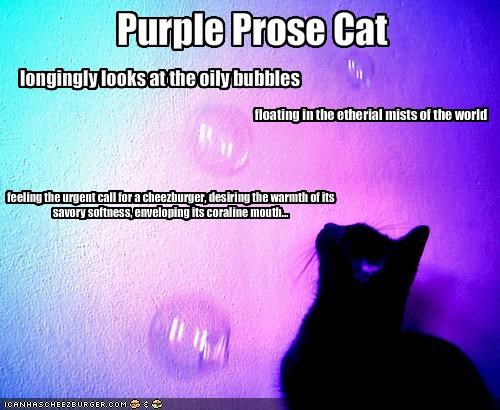 It’s worth noting at this point that as strongly as most experienced writers will argue against this practice, prose style is and always will be subjective. It’s entirely possible for a writer to not only be aware they write such elaborate prose, but actually do it on purpose. So if you’re a beginning writer guilty of this trope, don’t feel bad right off the bat. Maybe your goal is to imitate the exact styles of writers like William Shakespeare, Charles Dickens and Jane Austen, and that’s fine. Just know that unless you’re going for satire, most of the audience who would take your work seriously has probably been dead for a few hundred years.
It’s worth noting at this point that as strongly as most experienced writers will argue against this practice, prose style is and always will be subjective. It’s entirely possible for a writer to not only be aware they write such elaborate prose, but actually do it on purpose. So if you’re a beginning writer guilty of this trope, don’t feel bad right off the bat. Maybe your goal is to imitate the exact styles of writers like William Shakespeare, Charles Dickens and Jane Austen, and that’s fine. Just know that unless you’re going for satire, most of the audience who would take your work seriously has probably been dead for a few hundred years.
But I want to be taken seriously today! What should I do?
Don’t worry, the “purple prose bug” is treatable! For those of you aspiring writers who wish to establish yourselves before you try to follow the great authors who bend the rules, here’s a quick list of common purple prose mistakes and how you can avoid them:
1) Excessive detail. Yes, describing the setting of a scene before the action starts is often essential to telling a good story, but please don’t go on for a dozen pages about the hundred different colors in the sky or the history hidden in every brick of every building. Just because authors like J.R.R. Tolkien and Victor Hugo could get away with it doesn’t mean you can. One paragraph should be enough to set your scene, but no more than two.
2) Overly decorated nouns and verbs. If you’re one of the millions of readers who have read all of J.K. Rowling’s Harry Potter books, you may have learned that nouns and verbs should almost always include a “modifying friend”. But Rowling is an exception, a world-famous author of one of the best-selling book series in history, which you are (probably) not. That means she can do whatever she wants with her writing, whereas you should practice creating basic prose before you work too hard to copy her style. Try not to use too many adjectives and adverbs in your writing. Though this may seem counterintuitive, many famous writers would agree that less is more. If you don’t believe so, read a story by Ernest Hemingway or Mark Twain, and you’ll see how writing can be great without the need for too many “attachments”. To quote Twain, “When you catch an adjective, kill it.”
3) Said bookisms. This is one of the most common mistakes made by beginning writers: the constant use of alternative verbs for the word “said”. There’s a general belief that when it comes to writing dialogue, “said” is too plain and overused, so writers should go out of their way to replace it with words like “asked”, “muttered”, “hissed”, etc. As a teenager, I used a lot of these in my writing; I wouldn’t be surprised if I read back a dialogue-heavy scene from one of my old stories and found at least three pages between consecutive uses of “said”. But even famous authors seem to be guilty of this sometimes (I’m given to understand there’s an entire blog devoted to poking fun at the purpleness of Stephenie Meyer’s Twilight series), so don’t feel too bad if you find your own writing full of these bookisms. The important thing is that you know you should fix them. Dialogue should convey tone by itself, no extra tags required.
4) Too much “fancy vocabulary”. Continuing from the example of “said”, some writers tend to try and find as many advanced-sounding synonyms as possible to substitute the common words in their stories. While this may be fine once in a while, you shouldn’t run to the thesaurus for every other word you want to write. Otherwise, you’ll end up sending your readers to the dictionary just as frequently. It’s great to learn new words, but think about it for a second: the more time you put into driving your audience to read another book, the less time they’ll spend reading yours. Try to stick to vocabulary that your readers will understand, and if you must throw in a higher-level word now and then, at least have the courtesy to make its definition clear in context.
5) Exaggerated sentiment. There isn’t a lot I can say here except that this is pretty much a writer’s attempt to manipulate the reader into reacting a certain way to their writing. Going back to the first item on the list, if you throw too much rhetorical writing into your stories, it comes across as you trying too hard to evoke specific emotions from your readers, which more often than not will have the opposite effect. Trust your audience to understand what you’re trying to tell them. If you write it plainly enough, they will feel it.
Purple prose is a dangerous habit of many writers, and while it may be OK for some, most should make a point of avoiding or overcoming it, no matter how difficult this seems. If nothing else, choosing to create simple and clean prose is a sign of respect to your work and your readers, so take care with your style of writing. I’m certainly still trying.
So what are your experiences with purple prose? Have you read stories that you found too flowery for your taste? Were you (or are you) ever guilty of making these mistakes yourself?
 Genre(s): Ambient, Post-Rock
Genre(s): Ambient, Post-Rock












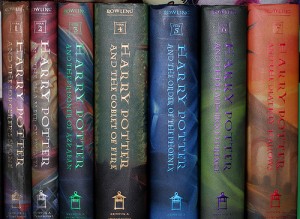





Recent Comments